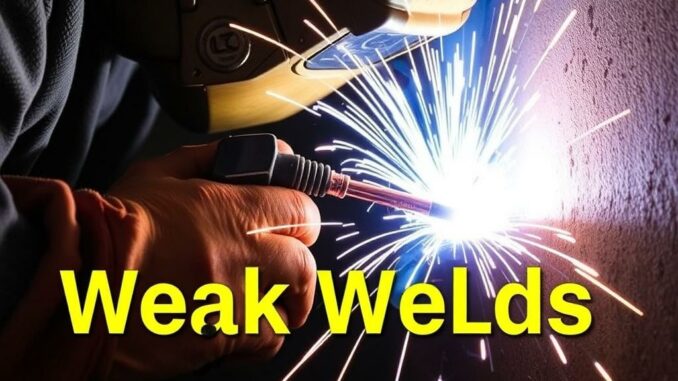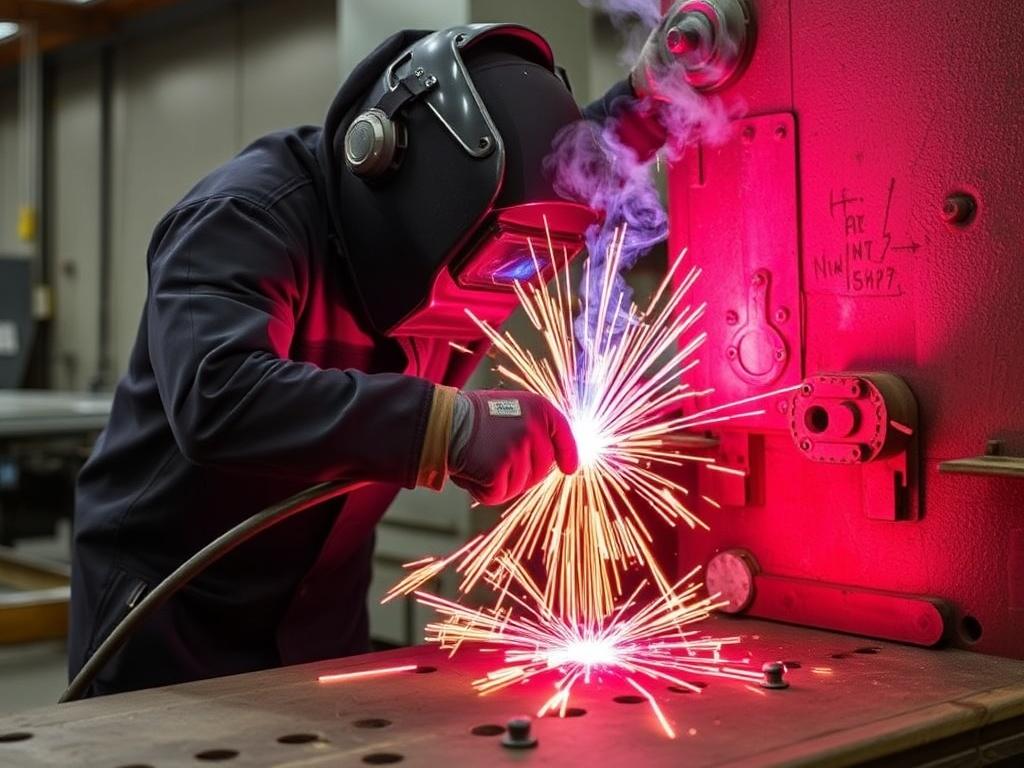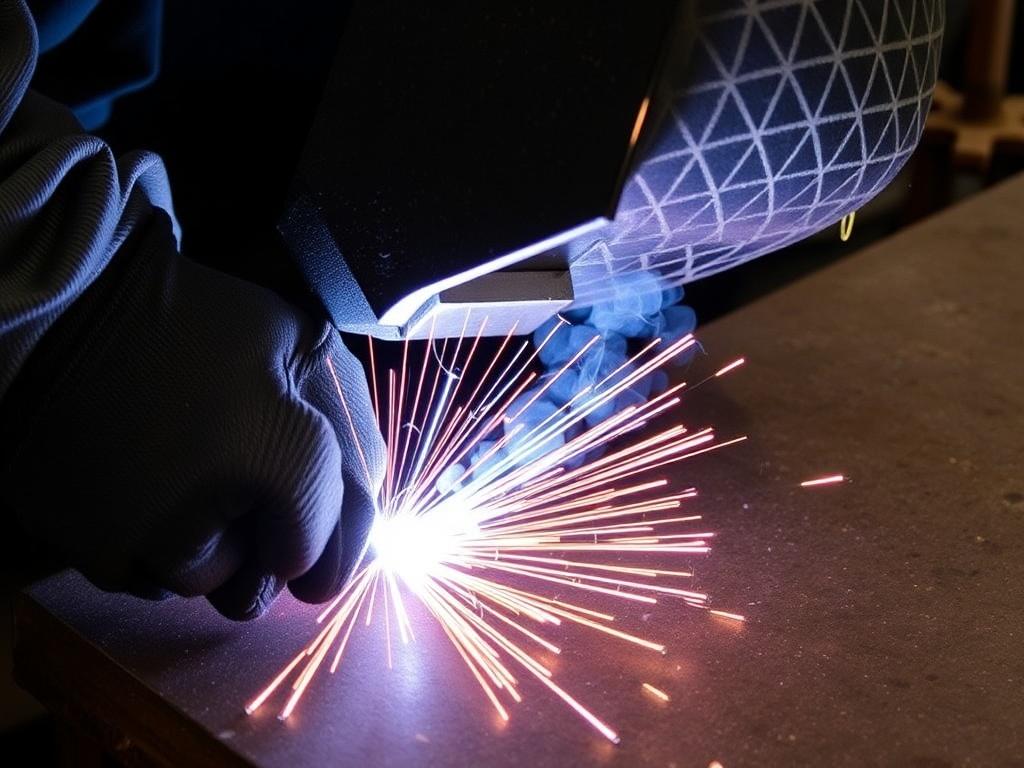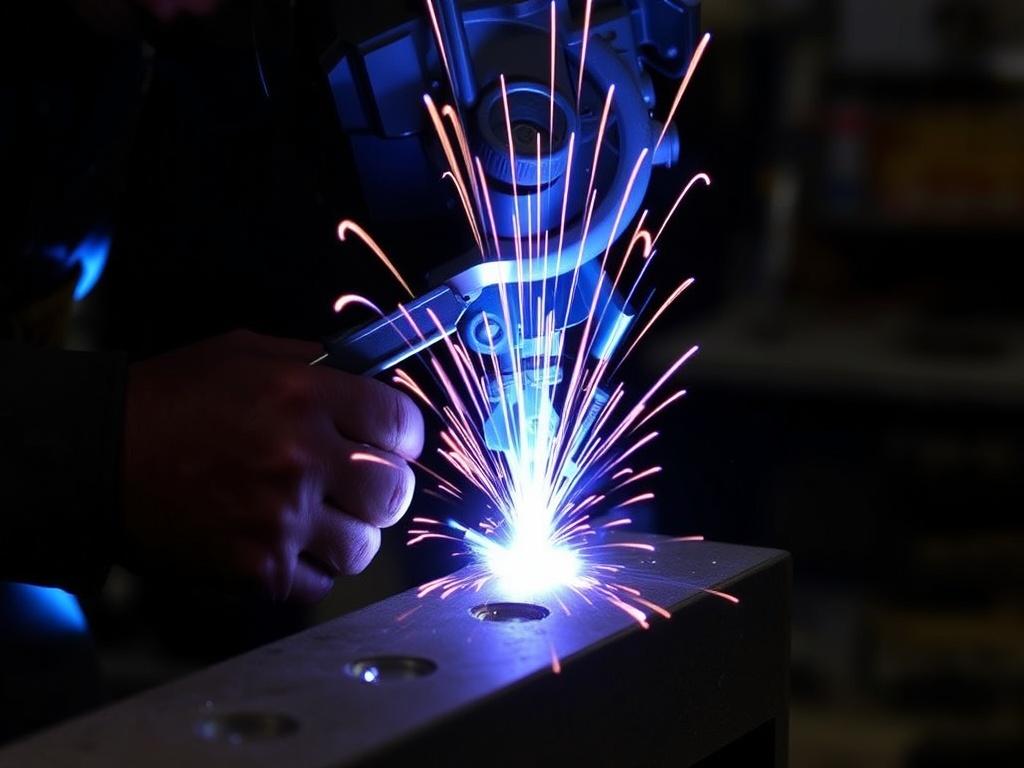
Welding is a fundamental skill in metalworking, construction, manufacturing, and countless do-it-yourself projects. However, even the most experienced welders can face the frustrating challenge of weak welds. A weak weld not only compromises the structural integrity of your project, but it can also lead to safety hazards, financial loss, and wasted effort. So, how can you strengthen weak welds effectively and ensure that your joints stand the test of time?
In this comprehensive guide, we’ll explore everything you need to know about identifying weak welds, the reasons behind weak welds, and most importantly, step-by-step methods for how to strengthen weak welds properly. Whether you’re a hobbyist or a professional, this article will help you achieve metal bonds that are both strong and reliable. Let’s dive in!
Understanding Weld Strength: What Makes a Weld Weak?
Before discussing how to strengthen weak welds, it’s essential to understand what causes welds to be weak in the first place. Weld strength varies based on several factors including the welding technique used, the quality of the materials, the welder’s skill level, and the preparation of the metal surfaces.
A weak weld typically has one or more of the following issues:
- Inadequate penetration: The weld doesn’t fuse deeply enough into the base metals.
- Improper bead formation: The weld bead is uneven, lacks fusion, or contains excessive spatter.
- Porosity: Gas pockets or voids trapped inside the weld.
- Cracking: Fractures that develop in or around the weld area.
- Contamination: Dirt, oil, rust, or paint on the surface can weaken the weld.
- Incorrect welding parameters: Too high or too low heat settings or travel speed.
Understanding the root cause of your weak welds is the first step to fixing the problem and learning how to strengthen weak welds effectively.
Common Types of Weak Weld Failures
When you see a weld fail, it typically falls into one of several categories. Recognizing these can save you time and effort when you repair or reinforce the joint.
| Failure Type | Description | Common Causes |
|---|---|---|
| Incomplete Penetration | The weld does not reach the entire depth of the joint. | Low heat input, improper joint design, insufficient welding passes. |
| Porosity | Gas pockets trapped inside the weld causing holes. | Contaminated base metal, excessive moisture, poor shielding gas coverage. |
| Cracking | The formation of fractures on or near the weld. | High cooling rates, hydrogen embrittlement, residual stresses. |
| Lack of Fusion | Weld metal fails to fuse properly with base metal. | Wrong welding angle, low heat input, dirty surfaces. |
| Undercut | A groove melted into the base metal but left unfilled by weld metal. | Excessive travel speed, too much welding current. |
Why Do Welds Become Weak Over Time?
Sometimes welds that initially seem strong can weaken as time goes on. Environmental factors, stress, and poor maintenance all play roles in weld degradation. Here’s why welds may become weak over time:
- Corrosion: Exposure to moisture or chemicals can corrode the weld and the base metal, especially if the weld is porous or has cracks.
- Fatigue: Repeated stress cycles can cause metal fatigue leading to cracks and fractures in the weld.
- Improper heat treatment: Some metals require post-weld heat treatment to relieve stresses; without it, the weld may become brittle or weak.
- Overloading: Applying forces beyond the design strength causes deformation or breaks.
Knowing these causes allows us to take preventive measures and perform the right repair techniques to maintain or strengthen welds.
How to Strengthen Weak Welds: Diagnosing the Problem
Before applying any fix, it’s crucial to diagnose precisely what’s wrong with your weak weld. This step will help you decide the best method for reinforcement or repair.
Visual Inspection
The easiest and first step is to look closely at the weld. Use a bright light and a magnifying glass, if necessary, to find surface defects like cracks, porosity holes, uneven beads, undercuts, or slag inclusions.
Nondestructive Testing (NDT)
For critical projects, you might want to employ more thorough diagnostic methods such as:
- Ultrasonic testing: Uses sound waves to detect internal cracks or voids.
- Magnetic particle testing: Helps find surface and near-surface cracks on ferrous metals.
- Dye penetrant inspection: Applies a liquid dye to reveal surface cracks.
These techniques are especially valuable in industrial and structural welding projects where safety cannot be compromised.
Mechanical Testing
When possible, sample welds can be destructively tested for tensile strength, bend strength, or impact resistance to evaluate their performance. This is often used for certification and quality control.
Step-by-Step Methods to Strengthen Weak Welds

After identifying the weak points, here’s how you can strengthen weak welds in practical and effective ways.
1. Proper Surface Preparation
One of the most common reasons for weak welds is poor surface preparation. Clean, bare metal ensures excellent weld penetration and fusion. Here’s what to do:
- Remove rust, paint, oil, dirt, and moisture with a wire brush, grinder, or chemical cleaner.
- Use a grinder to smooth out rough or uneven edges.
- Dry the metal thoroughly before welding to avoid moisture-induced porosity.
2. Preheating
For thick or high-carbon steels, preheating the metal before welding reduces the cooling rate and prevents cracking and weaknesses. Preheat temperatures vary depending on the material but usually range from 300°F to 600°F (150°C to 315°C).
Consult welding specifications to determine the correct preheat temperature for your materials.
3. Selecting the Right Welding Parameters
Incorrect welding parameters can significantly weaken a weld. Parameters include:
- Current (amperage): Too low results in weak penetration; too high causes burn-through.
- Voltage: Affects bead shape and width.
- Travel speed: Too fast makes shallow welds, too slow leads to excessive heat input and distortion.
- Electrode or filler wire type and size: Must be compatible with base metal.
Adjust your welder settings carefully depending on the thickness and type of metal you’re welding.
4. Multiple Pass Welding
In thick materials, a single bead may not fully penetrate or adequately fill the joint. Performing multi-pass welding can equally distribute heat and improve overall strength.
- Start with a root pass to ensure penetration.
- Add filler passes to build up the weld size and fill undercuts.
- Finish with a cap pass for smooth bead appearance and additional strength.
5. Post-Weld Heat Treatment (PWHT)
Many steels require controlled reheating after welding to relieve stresses and reduce the risk of cracking. PWHT also improves metallurgical properties and weld durability. The exact heat treatment depends on the metal grade and application.
6. Reinforcement Welding
If a weld is already weak, you can reinforce it by grinding out the defective weld section and rewelding it, or by performing a strengthening overlay weld next to the original joint.
Here’s how:
- Grind off cracks, porosity, or undercuts completely.
- Make sure the repair area has fresh, clean metal.
- Use proper welding parameters and filler material for the repair.
- Multiple passes may be necessary depending on joint thickness.
7. Mechanical Reinforcement
In some cases, you may want to strengthen a weak weld using mechanical means such as:
- Backing bars or strips: Placed behind the joint during welding to improve penetration and provide physical support.
- Bolted reinforcement plates: Can be added over the welded joint to increase strength.
- Rivets or clamps: Used in specific design contexts where welding alone is insufficient.
Preventing Weak Welds in the Future
The best way to deal with weak welds is to prevent them from occurring in the first place. Follow these tips to maintain good welding practice and produce consistently strong welds:
- Always prepare and clean your metals thoroughly.
- Match filler material and base metal correctly.
- Use appropriate welding equipment and settings.
- Practice steady hand motions and proper technique.
- Preheat and post-heat treat when necessary.
- Inspect welds regularly during and after the process.
Common Mistakes That Lead to Weak Welds
Understanding and avoiding typical errors can save you from weak welds. Here are frequent mistakes welders make that contribute to joint failure:
| Mistake | Effect on Weld | How to Avoid |
|---|---|---|
| Improper joint fit-up | Leaks, poor penetration, increased defects. | Measure precisely, clamp securely before welding. |
| Inconsistent travel speed | Uneven bead and weak spots. | Maintain steady hand movement and speed. |
| Wrong polarity or shielding gas | Porosity and lack of fusion. | Check equipment set-up specific to electrode and metal. |
| Skipping cleaning steps | Contamination leading to porosity or cracks. | Always clean metal before welding. |
| Using undersized electrode or filler | Weaker weld deposits. | Select correct electrode size and type for metal thickness. |
Tools and Materials That Help Strengthen Weak Welds

Having the right tools and materials is key to effectively strengthen weak welds. Here’s a list of essentials:
Tools
- Angle grinder and wire brush for surface prep.
- Welding machine with adjustable amperage and voltage controls.
- Proper welding helmets and protective gear.
- Clamps and fixtures for joint stabilization.
- Inspection instruments such as magnifying glass, weld gauges.
- Temperature gauge or infrared thermometer for preheat and PWHT.
Materials
- Correct filler rods or electrodes matching base metal.
- Shielding gases (Argon, CO2, or mixes) for MIG/TIG welding.
- Cleaning chemicals or solvents for degreasing.
- Backing bars or strips for support if required.
Practical Example: Strengthening a Weak Weld on a Steel Frame
To illustrate the concepts, let’s walk through an actual scenario of strengthening a weak weld on a steel structure.
Scenario: You notice a small crack forming along the weld seam on a steel frame supporting a machinery platform. The crack looks like it’s caused by incomplete penetration and stress over time.
Step 1: Inspection
Begin with visual examination. Confirm the crack length, check for other defects, and determine the extent of the damage. Use a dye penetrant kit to reveal less visible cracks.
Step 2: Preparation
Grind out the cracked weld beads and clean the metal surfaces. Remove rust or contaminants near the repair area.
Step 3: Preheating
Since the steel is thick (about 1/2 inch), preheat the metal to around 300°F with a torch, using a heat indicator to monitor.
Step 4: Welding
Using an appropriate SMAW (shielded metal arc welding) electrode, perform a root pass to fill the crack area completely, ensuring full penetration. Follow with two filler passes, each overlapping slightly, to rebuild weld strength.
Step 5: Post-weld Treatment
Allow slow cooling to avoid stress cracks. If possible, apply post-weld heat treatment to relieve residual stresses.
Step 6: Final Inspection
After the weld cools, inspect for proper bead shape, fusion, and absence of new cracks or porosity. Optionally, ultrasonic testing can be used for critical applications.
By following these steps, you have effectively strengthened the weak weld, restored the steel frame’s integrity, and prevented potential failure.
Summary Table: Quick Tips for How to Strengthen Weak Welds
| Action | Description | Effect |
|---|---|---|
| Surface Cleaning | Remove contaminants before welding. | Improves fusion, reduces porosity. |
| Preheating | Apply heat before welding thick metals. | Prevents cracking, improves penetration. |
| Correct Parameters | Use proper amperage, voltage, travel speed. | Ensures consistent weld bead and strength. |
| Multiple Pass Welds | Add layers for thick materials. | Increases weld volume and strength. |
| Grind and Reweld | Remove and repair defective weld areas. | Restores weld integrity. |
| Post-Weld Heat Treatment | Heat to relieve residual stress. | Prevents cracking and brittleness. |
Additional Resources for Improving Weld Strength
If you want to deepen your knowledge on how to strengthen weak welds, numerous resources are available:
- Welding Handbooks: The American Welding Society (AWS) publishes authoritative books on welding techniques and metallurgy.
- Online Courses: Websites like Udemy, Coursera, or welding supply manufacturers’ training sections offer detailed classes.
- Forums and Communities: Joining forums such as WeldingWeb and Reddit’s welding section helps get advice from professionals and hobbyists alike.
- Technical Articles: Read case studies and expert articles on quality welding procedures and repair techniques.
Final Thoughts: Welding Is Both Art and Science

Strengthening weak welds isn’t just a matter of adding more weld material or increasing heat. It requires a precise approach based on understanding metal properties, welding processes, and potential failure mechanisms. Welding is both an art—requiring steady hands and practiced technique—and a science involving parameters, materials, and physics.
By following the outlined steps and paying attention to detail, you can transform weak welds into strong, dependable joints that bring your projects to life without worry. Remember, the investment in time and knowledge to strengthen weak welds will always pay off in safety, durability, and peace of mind.
Happy welding!
